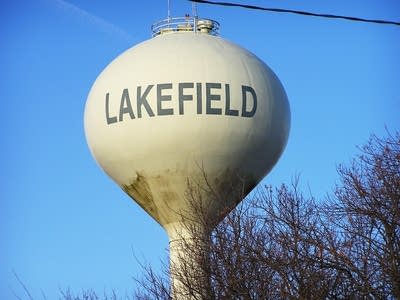As state expands broadband reach, some content without
Go Deeper.
Create an account or log in to save stories.
Like this?
Thanks for liking this story! We have added it to a list of your favorite stories.

When Lutheran church pastor Andrew Schensted plunks his laptop computer onto the dining room table he can connect almost instantly to the Internet, far faster than he could have just a couple of months ago.
Schensted and his wife are the first in their southwest Minnesota community to connect to a new high-speed Internet service. He said the new service is everything it was advertised to be.
"We're getting anywhere from 50 megabits downloading and about 20 to 30 uploading," Schensted said. "It's just really incredibly fast."
The Internet connection he uses is made of fiber optic cable linking his house to an Internet server about 15 miles away. It's one of 18 broadband Internet projects in Minnesota funded by more than $200 million in federal stimulus money. The state is using the money to expand access to high-speed broadband, mostly in rural parts of the state.
Turn Up Your Support
MPR News helps you turn down the noise and build shared understanding. Turn up your support for this public resource and keep trusted journalism accessible to all.
Construction of those systems is well under way. But even with a stronger signal, there are still plenty of people without Internet service, many by choice.
Schensted's house is connected to the nearly $13 million Southwest Minnesota Broadband Service project that will serve eight communities: Bingham Lake, Brewster, Heron Lake, Jackson, Lakefield, Okabena, Round Lake and Wilder.

Schensted said he has never had that kind of Internet speed, even when he lived in the Twin Cities.
"This is perhaps overkill for even my home," he said. "I'm not complaining about it, but it's a wonderful overkill. My wife and I can both be using a computer, we can be streaming something on the television, all at the same time which is something we wouldn't have dreamed of before."
That's the goal of these broadband projects, to bring never-before experienced Internet quality to rural Minnesota. According to a state report released last month, nearly all of Minnesota has some level of broadband service. But many of those lines are too slow for video and other data heavy uses. The federally funded broadband projects aim to solve that.
"It's important for regions, not just metropolitan, but rural areas to also have access," state Commerce Commissioner Mike Rothman said.
"Making sure we have the speeds to get and upload and download documents," Rothman said. "Make sure that we're competitive with the region and with the nation."
Rothman said the new Internet fiber optic systems will help develop businesses and jobs. But lack of interest in the Internet is a significant hurdle in Minnesota.
Last month's state broadband report said virtually all Minnesotans have access to some level of broadband, but 40 percent of rural residents do not subscribe to Internet service.
The reasons are varied. Some people don't want to pay for relatively slow speeds, or they just can't afford the service.

But the report notes that the biggest reason for apathy is the Internet itself. Many people don't believe there's anything on the Internet they need.
In Lakefield, Dennis Van Der Linden said he's in that category.
"I do not have Internet at the house and I feel that I can live without it," said Van Der Linden, who works at a farm equipment manufacturing plant.
Van Der Linden said he did have broadband service as recently as five years ago. But he turned it off because he was tired of scams and spam.
There are efforts though to boost Internet acceptance. The Blandin Foundation has a program to hand out free used computers to low-income residents in rural counties. It's also educating businesses about how to use the Internet to boost sales.
Southwest Minnesota Broadband Services general manager Dan Olsen said as the baby boom generation ages there are also family factors that will help boost Internet use.
"Grandkids cause grandparents to adopt it," Olsen said. "They catch that big walleye, they're just going to email grandma and grandpa a picture."




